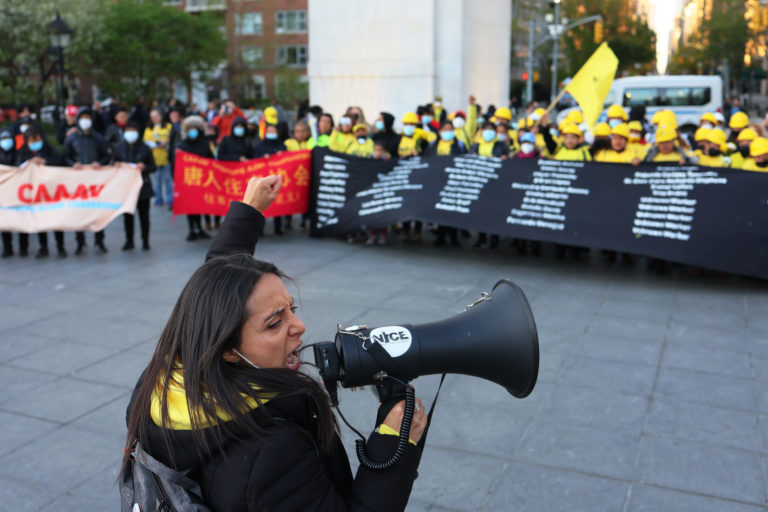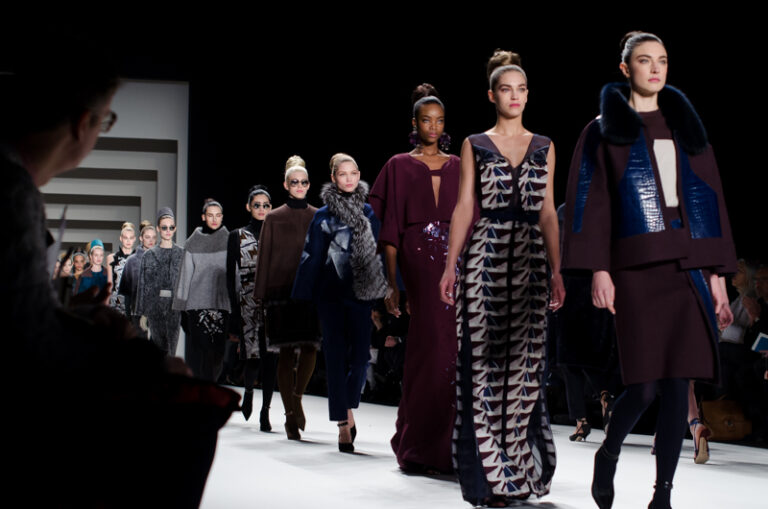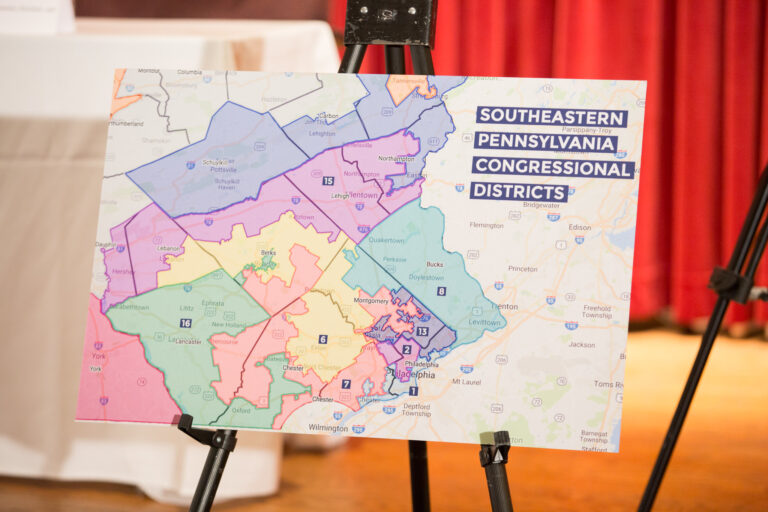The fashion industry is good at disguising labor. On one end of the supply chain, models lack adequate labor protections and suffer a myriad of abuses, from coerced starvation to systematic wage theft, but they appear effortlessly glamorous. Indeed, their performance succeeds only when the work involved is hidden from the audience. On the other end, sweatshop conditions are well known and have long plagued the planet, but garment workers remain out of sight, out of mind toiling in factories overseas.
This week, on the Global Day of Action for Safe Factories, as protesters demanded that apparel giant H&M keep its promises to make its Bangladeshi supplier factories safe, I consider garment workers’ plight and how achieving visibility over the supply chain is a precondition for fulfilling workers’ rights.
Rana Plaza and the Bangladesh Accord
Three years ago, the Rana Plaza building collapse in Bangladesh killed 1,134 workers and injured over 2,500. This tragedy marks the worst industrial disaster in the history of the garment industry and evokes iconic moments in labor history, notably the Triangle Shirtwaist Factory Fire of 1911, when primarily young women working in the garment industry lost their lives in unsafe factories.
Factory fires and collapses are not uncommon in Bangladesh, which is the second largest exporter of garments after China, and where, at a minimum wage of just $68 per month, workers make the lowest wages in the world. But Rana Plaza marked a turning point and forced companies to act.
In its aftermath, over 200 companies signed onto the Accord on Fire and Building Safety in Bangladesh, an independent, legally binding agreement between brands and trade unions designed to hold brands accountable for the conditions in the factories that export their clothes. The Accord, which includes ten unions, “prioritizes worker participation, with the objective of including greater worker voice in inspections, monitoring, and implementing corrective action plans, in addition to empowering workers to refuse unsafe work if necessary.” H&M was the first company to sign onto the Accord, followed by many other, mostly European apparel brands.
Another group, the Alliance for Fire and Building Safety in Bangladesh, gained signatures from 28 American and Canadian brands. Though it has been criticized for being a corporate-controlled initiative like others that have failed in the past, differences aside, both groups have inspected hundreds of factories each month and committed to help correct safety problems found to prevent another factory disaster.
The Tip of the Iceberg
As Sarah Labowitz and Dorothée Baumann-Pauly of NYU Stern Center of Business and Human Rights explain in their December 2015 report, neither the Accord nor the Alliance are perfect. The two groups encompass only 1,900 factories, which represent 27% of the estimated 7,000 total factories in Bangladesh. There is a widespread reliance on subcontracting, which is key to the low cost, high volume model of garment production in Bangladesh. The researchers estimate that there are 2.8 million workers in factories that are not direct exporters and, therefore, not part of the Accord or the Alliance.
The informal factories operate on very tight margins and with little oversight. Workers in this part of the sector are especially vulnerable because they are invisible to regulators. Informal factories do not register with the government, national trade associations of apparel manufacturers, or brands. And because these factories operate on such slim margins, they cannot produce in accordance with minimum labor standards.
Labowitz and Baumann-Pauly offer six recommendations to address factory safety in the informal sector:
- 1. Acknowledge the full scale and complexity of indirect sourcing. Foreign brands, local manufacturers, the government of Bangladesh, trade associations, and foreign governments should all play a role in this effort.
- 2. Identify the true size of Bangladesh’s export garment sector. More and better data is required from the ILO, in cooperation with the trade associations, unions, and the government of Bangladesh, as well as private philanthropies.
- 3. Regulate and create incentives to formalize indirect factories through improved enforcement, infrastructure development and better access to capital.
- 4. Make the case for continued investment in Bangladesh. This will require the government of Bangladesh to strengthen the climate for mature industrial relations, in which unions can thrive.
- 5. Convene a taskforce of senior leadership in Bangladesh as well as international stakeholders.
- 6. Share costs to upgrade Bangladesh’s infrastructure between local and international participants.
Global Day of Action
On May 3rd, 2016, labor rights groups and consumers gathered at H&M stores to protest the Swedish retail giant’s slow progress to safeguard its garment workers in Bangladesh. A review of corrective action plans relating to H&M’s direct suppliers shows that the majority of these factories still lack adequate fire exits three years after H&M committed to improve working conditions by signing the Accord. This puts more than 78,000 garment workers in jeopardy.
The call to action came as H&M has increased attempts to promote its sustainability commitments. The launch of their “Conscious Exclusive Collection” in Paris and the release of a video by pop star M.I.A. to promote their “World Recycle Week” overlapped with the anniversary of the Rana Plaza collapse and drew criticism from worker rights organizations, who have called on H&M to prove its commitments through action rather than publicity stunts.
The importance of such repairs was underscored by a massive fire at a H&M supplier, Matrix Sweaters Ltd, in February, 2016. There were few injuries because most workers had yet to arrive for their shift. The Accord’s inspection report for the factory revealed that it had missed numerous deadlines to make the building safe, and had the fire broken out an hour later, scores of workers may have been trapped inside.
Making Labor Rights Visible. Fashionable, Even.
The runways of New York and the factories of Bangladesh couldn’t seem farther apart. And, yet, in both cases, the work is performed overwhelmingly by young women and girls. Though they work under different socioeconomic conditions, both groups of workers are trying to assert their rights in a hostile labor environment. Modeling agencies and fashion brands in the United States generally maintain that models are independent contractors, who, as such, have few to no protections under the National Labor Relations Act. Similarly, as one of the first “fissured industries,” garment manufacturing has long used methods that keep employers from directly employing the workers manufacturing their clothes.
The Rana Plaza building collapse sparked meaningful action. But, save a tragedy of such size and scope, the headlines go away and consumers continue to buy without regard for the conditions under which their clothes are made. If fashion models and others on the creative side of the industry were empowered to make demands, or at least ask questions about the practices of the brands they represent, they would not have to be complicit in abuses further down the supply chain. As the faces of the multinational fashion companies, models are essentially brand ambassadors and are uniquely positioned to reach consumers.
We are not simply going to shop ourselves into a better world, but we could help consumers make more informed purchases and leverage our visibility to help spur policy changes at home and abroad by injecting a sorely needed labor consciousness into fashion.






Daily News & Commentary
Start your day with our roundup of the latest labor developments. See all
December 18
New Jersey adopts disparate impact rules; Teamsters oppose railroad merger; court pauses more shutdown layoffs.
December 17
The TSA suspends a labor union representing 47,000 officers for a second time; the Trump administration seeks to recruit over 1,000 artificial intelligence experts to the federal workforce; and the New York Times reports on the tumultuous changes that U.S. labor relations has seen over the past year.
December 16
Second Circuit affirms dismissal of former collegiate athletes’ antitrust suit; UPS will invest $120 million in truck-unloading robots; Sharon Block argues there are reasons for optimism about labor’s future.
December 15
Advocating a private right of action for the NLRA, 11th Circuit criticizes McDonnell Douglas, Congress considers amending WARN Act.
December 12
OH vetoes bill weakening child labor protections; UT repeals public-sector bargaining ban; SCOTUS takes up case on post-arbitration award jurisdiction
December 11
House forces a vote on the “Protect America’s Workforce Act;” arguments on Trump’s executive order nullifying collective bargaining rights; and Penn State file a petition to form a union.